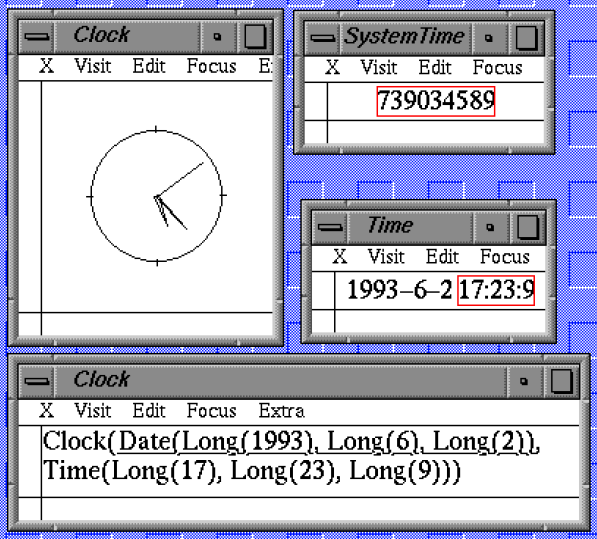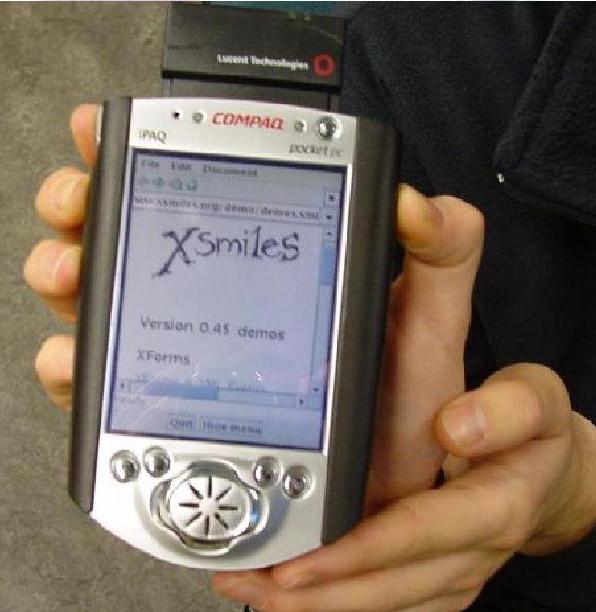XForms 1.0: en route to success!
XForms 1.0 was released October 2003. On the day of release there were
more implementations than any other W3C specification on the day of release,
ever.
Around 30 implementations announced so far, including plugins, native
implementations, proxies, 'zero install' implementations, a voice-browser, an
editor, a validator...
From companies such as: IBM, Novell, Oracle, Sun, xport.net, ...
Major companies and industries are already using XForms (e.g. US Navy,
Bristol-Myers-Squibb, Frauenhofer, Daiwa - a Japanese Bank, the British Life
Insurance industry, German shipbuilders ... and more I can't tell you about
yet: watch this space!)
The Central Ideas of XForms
The central ideas of XForms are that:
- It separates off the data being
collected, and its related logic (the 'model') from the markup for the
controls to enter and change the data.
- The data is anyXML document;
controls can bind to any element or attribute in it
- The controls are represented only on the basis of their
intent – what they are meant to do – leaving
the author and the device more freedom to adapt the presentation to
fit
Not Just for Forms
Although XForms comes from an analysis of, and as a replacement for, HTML
Forms, it is more, and can be, and is, used for applications as well.
It has:
- A memory model
- Input/output
- Calculation
- Presentation
Memory model
The data is one or more XML documents, internal or external.
Input, output, data properties, calculations 'bind' to elements and
attributes in the data
Memory can be initialised inline, from a file, a URL, a query, SOAP, etc,
etc.
Input/output
Controls are deliberately abstract, only expressing intent (such as select
one from a set). Presentation is up to the implementation, stylesheets,
binding to SVG etc.
Abstract level ensures device independence and accessibility
Fallback ensures applicability over a wide range of device types.
There have already been demonstrations of the same XForms being served to
a PC, a PDA, a cell phone, a voice browser and even an instant messenger,
without change.
Calculation
XForms has an extensible, declarative calculation model, like
spreadsheets
Uses XML Events, with primitives that mean scripting is often not
necessary
Scripting still an option
Imperative vs declarative
 In the 80's I built a completely declarative system.
In the 80's I built a completely declarative system.
It ran on an Atari ST amongst others.
Here is a screen shot (on Unix) of several clocks in that system.
They are all ticking every second.
Imperative
To write an analogue clock takes a lot of code. Here is the shortest I
could find: more than 1000 lines.

Declarative code for a clock
clock = (h, m, s)
s = system:seconds mod 60
m = (system:seconds div 60) mod 60
h = (system:second div 3600) mod 24
aclock = circle(combine{hhand, mhand, shand,
decoration})
shand = line(slength) rotated (s*6)
mhand = line(mlength) rotated (m*6)
hhand = line(hlength)
rotated ((h mod 12)*30 + m div 2)
hlength = ...
mlength = ...
slength = ...
decoration = ...
Presentation
XForms can be hosted in different languages
Use CSS for presentation
Or binding to SVG
etc
Advantages
 Integration with XML
Integration with XML- Device independence
- Accessibility
- Mostly declarative, without shutting out procedural use
- More information: www.w3.org/Markup/Forms


 Integration with XML
Integration with XML